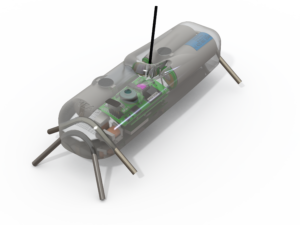
Features
- Argos
- Depth
- Temperature
- Light Level

WEIGHT
170 g
LIFE
298 days
DIMENSIONS (mm)
138 x 38 x 25
Key Benefits
The SPLASH10-L-280 is a data-archiving, satellite transmitting tag designed for tracking the vertical and horizontal movements of narwhals. This tag can also link with the stomach temperature pill to gather additional data products.
Data products available include but are not limited to:
- Depth archive
- Temperature archive
- Wet/Dry archive
- Light-Level Geolocation
- Argos locations
- PDT (Profile of Depth and Temperature)
- TAT (Time-At-Temperature Histogram)
- TAD (Time-At-Depth)
- And more!
Argos
Depth
Temperature
Light Level
Key Features
Our SPLASH10 tags contain an array of sensors including depth, temperature, light level, and wet/dry. During deployment, data are collected, summarized, and compressed for Argos transmission. The full archive is available upon recovery of the tag.
Wildlife Computers SPLASH tags appeared in over 300 publications.
- Highly Customizable Data Collection and Transmitting Schedule—researchers have the power to customize and prioritize data transmission to capture the information that is most significant for the project. Deployments can be tailored to achieve unique experimental objectives. Flexible transmissions provide the ability to extend the life of the tag by focusing on specific seasons or times of the year.
- Full Data Archive Available on Recovery—SPLASH10 tags contain one GB of onboard memory for archiving data. This means when you recover your tag, your full data set is available, even if the battery is dead—data are maintained in the archive for up to 25 years.
- The Portal Advantage—SPLASH10 tags are supported by the Wildlife Computers Data Portal, a collection of data management tools and services. Developed specifically for the display and investigation of data from Wildlife Computers tags, the data portal streamlines the processes of acquiring, preserving, and sharing data services. The portal helps collect, prepare, and analyze the data returned from the tag—via Argos or the archive. Data are easily sorted, filtered, searched, uploaded, and shared. You can see a Google Earth display of your deployment track, color-coded to show the relative age of each location. You can also set up a live KMZ to get data into your own monitoring system.
